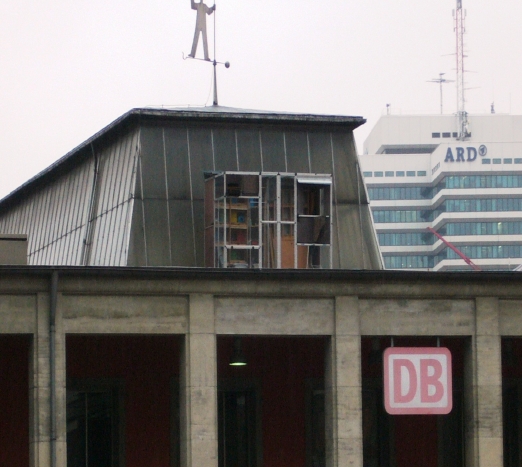We use dovecotes to limit pigeon populations in large areas. Pigeons are attracted and encouraged to breed in the dovecote. By replacing the clutches (birth
control) the bird population in the area can be limited in the long term.
This so-called AUGSBURGER model has been proven several times and is not only humane, but effective in the long term.
This so-called AUGSBURGER model has been proven several times and is not only humane, but effective in the long term.
The important characteristics of pigeon houses
- Pigeon houses are built up at a prominent spot in the area or on top of a building.
- We place two pigeons into the dovecote in order to attract wild pigeons. These pigeons and food attract the wild pigeons into the dovecote. By repeatedly placing food and water, the pigeons are attracted in the long-term to the dovecote.
- Additional small cages with food and pigeons in them, will be placed in the area. When wild pigeons are captured in them, they will be permanently released into the large dovecote. This way, the wild pigeons in a larger area learn about the dovecote, increasing the efficiency of the dovecote in the whole area. This method of pigeon resettlement is patented.
- With this model an area of 500 meters in diamter can be controlled.
- The birds are regularly provided with food and medical care if needed. A part of the clutch is replaced with dummies, leading to a reduction on the bird population in the long-term
- The dovecote must be regularly cleaned and an extermination against pigeon fleas and ticks must be executed.
- With the pigeon-house approach, a guarantee on the effectiveness is possible.
- This concept is often adopted by municipalities / cities, who rely on the "concept of animal welfare regulation of the population of feral pigeons".
- Pigeon houses are suitable for medium to heavy populations of birds.
The pigeon house concept is very successful and currently used in
Baden-Wuerttemberg: Aalen, Balingen, Esslingen, Karlsruhe, Mannheim, Metzingen, Pforzheim, Reutlingen, Rottenburg, Rottweil, Schorndorf, Schwäbisch Gmünd, Tübingen
Bavaria: Aichach, Augsburg, Bad Kissingen Erlangen, Würzburg
Hesse: Frankfurt, Kassel, Wiesbaden
Lower Saxony: Göttingen, Hanover
North Rhine-Westphalia: Aachen, Bielefeld, Düsseldorf, Essen, Moers, Witten, Wülfrath
Rhineland-Palatinate: Bad Kreuznach, Ludwigshafen
Saarland: Homburg, Saarbrücken
Saxony: Torgau
Example of successful implementation: Munich Central Station
Baden-Wuerttemberg: Aalen, Balingen, Esslingen, Karlsruhe, Mannheim, Metzingen, Pforzheim, Reutlingen, Rottenburg, Rottweil, Schorndorf, Schwäbisch Gmünd, Tübingen
Bavaria: Aichach, Augsburg, Bad Kissingen Erlangen, Würzburg
Hesse: Frankfurt, Kassel, Wiesbaden
Lower Saxony: Göttingen, Hanover
North Rhine-Westphalia: Aachen, Bielefeld, Düsseldorf, Essen, Moers, Witten, Wülfrath
Rhineland-Palatinate: Bad Kreuznach, Ludwigshafen
Saarland: Homburg, Saarbrücken
Saxony: Torgau
Example of successful implementation: Munich Central Station
 |
 |










